The tracks of dinosaurs at Bella Lasta

| Today I want you to know the old tracks of Teropodi, found on a big slab called Bella Lasta. Let's start from San Giorgio of Boscochiesanuova, after having left your car at the huge parking that you can find on your right; then let's walk towards south/south-west along the level route number 250. |
|
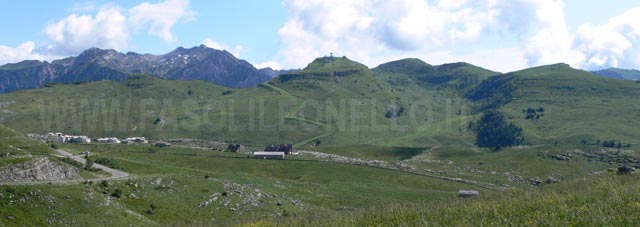 |
|
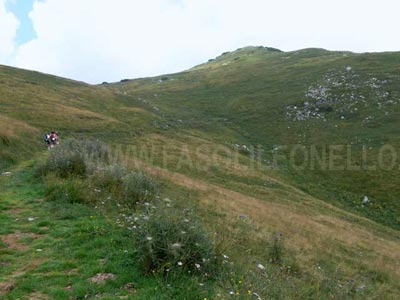 |
This path moves around the mountain Castel Malera, passing through mountain dew Malera di Sotto. After that, it goes up slightly until reaching another mountain dew, Malera di Sopra, that we keep having on our right, in order to get to Passo Malera, height m.1722. |
| After having passed Malera di Sopra, we can already find the first signs of the jurassic era. On some stones it's possible to see many fossil oyster shells, called properly Lithiotis Problematica. In origin, it was a shellfish characterized by an irregular shell, that you can see here below; on the right a detail of the fossil shellfish. | |
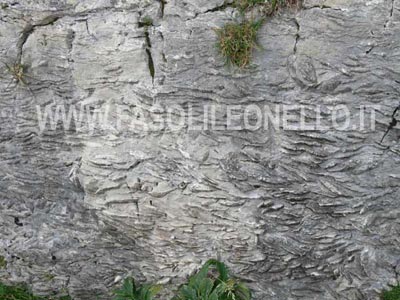 |
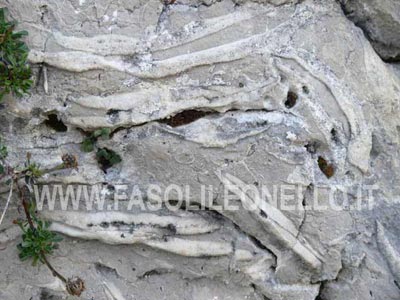 |
| A curios marmot is watching us, on guard. | Passo Malera, height m.1722. |
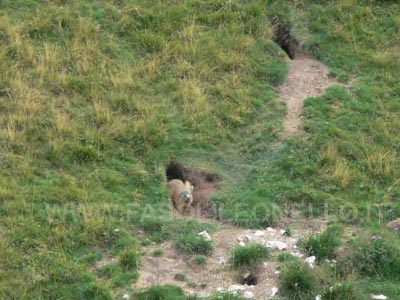 |
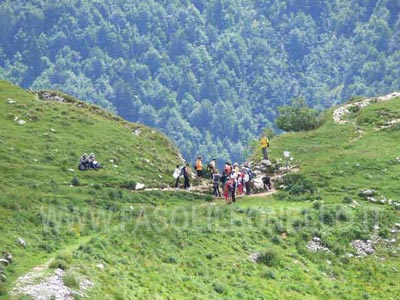 |
| Discovered in july 1993 by G. Roghi and then studied by prof. Mietto and doct. Zorzin, it's located to the south of mountaintop Trappola, accessible by Passo Malera, walking down for one hundred meters along route 287, in the direction of the mountain dew Pertica of Carega. Here a sign on our left showing Bella Lasta, it will bring us to a track and big stairs until reaching the basis of the jurassic slab. I suggest you to visit it with a safety equipment and with caution, considering that its slope is 30° - 32° C, NE-SW. | |
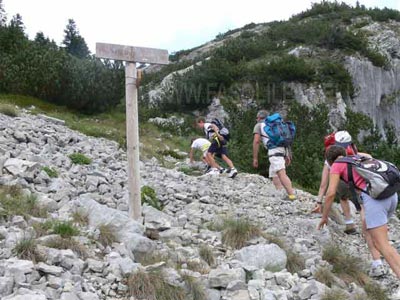 |
The diversion that starts from route 287, on the left side, it brings us toward Bella Lasta, thanks to the numerous clearifying signals, passing by a way with lots of stones. |
| The
slabs are part of the medium-upper side of the grey limestones of
Noriglio, Lias' typical formation, settled in the area between Veneto
and Trentino, in a period of time between 210 millions and 190 millions
of years ago. |
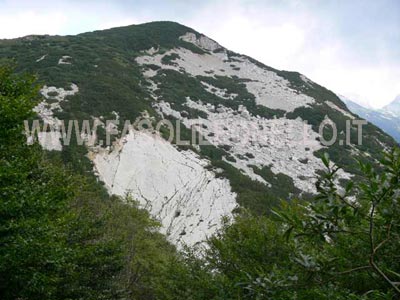 |
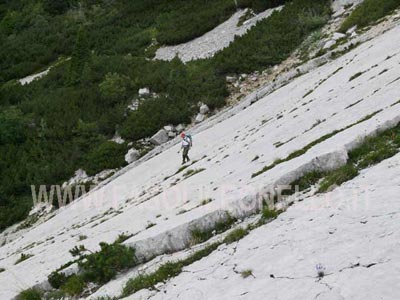 |
A cautious tour of reconnaissance on Bella Lasta, considering that its height is more or less 30° - 32° degrees, with a NE-SW slope. Be cautious also in avoiding sliding stones. |
| You can see the tracks just passing by a short gallery, part of a trench, that arrives near the centre of the slab. Here a red signal shows the first couple of tridactyl tracks, probably of theropoda Kayentapus. Then the route go north-eastward, where you can find similar tracks. Instead,if you go southward, you'll find another way with five big circular tracks (about 40 cm each), yet not attributed to a particular dinosaur. Different studies about them are developing. |
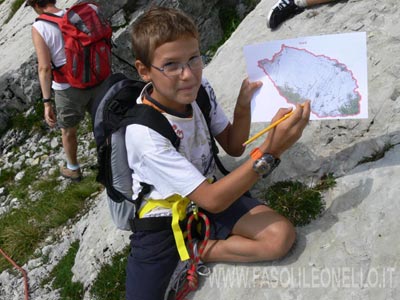 |
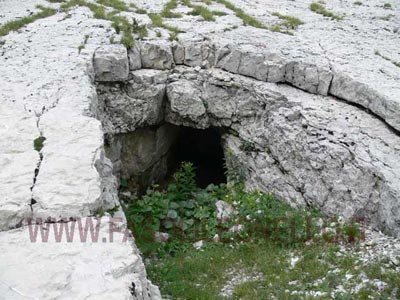 |
At
the centre of Lasta near the tracks, you can find this small hole, used
as point of observation and defended until the first world war, located
on the boundary between Italy and the Austro-Hungarian
empire; actually, right now, it traces out the boundary between
Veneto and Trentino. |
| Here there are the searched tridactyl tracks of Theropoda Kayentapus; here a red signal indicates the first couple of tracks; then the route continues towards northeast, with other similar tracks. | 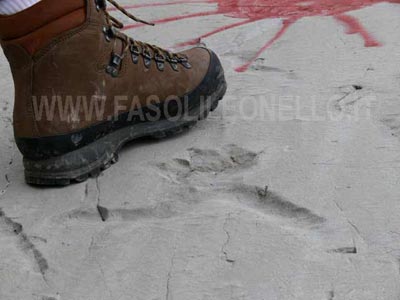 |
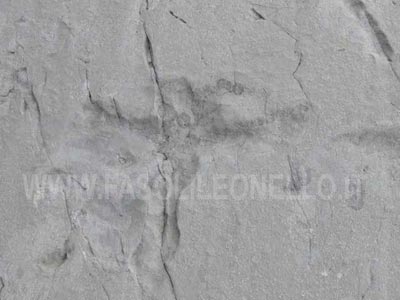 |
Another track of Theropoda Kyentapus. |
| Keeping on measuring. | 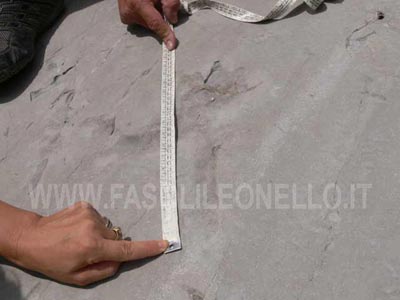 |
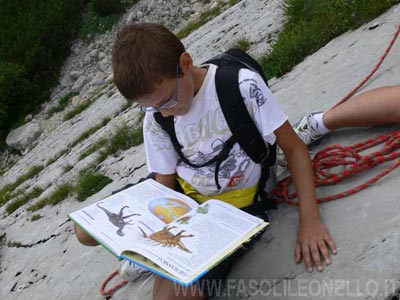 |
You can study and compare the different informations directly here, in this jurassic atmosphere. |
|
Southward there's another route with five big circular tracks, about 40 cm, not yet attributed to a specific dinosaur. Studies about them are in progress. |
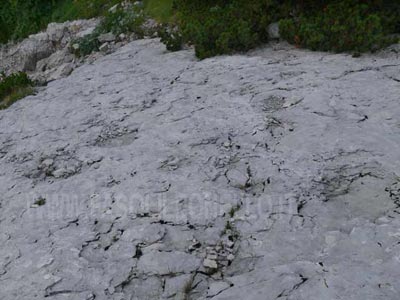 |
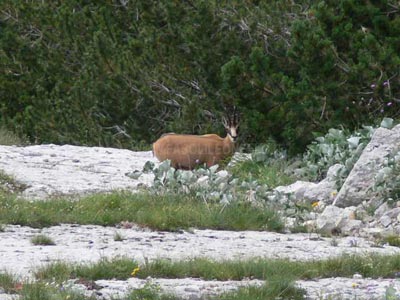 |
This
wonderful chamois was like a guide for us; fair and silent animal, it
followed us during our hike in this beautiful place made of stones. |
| Coming back through Passo Malera | 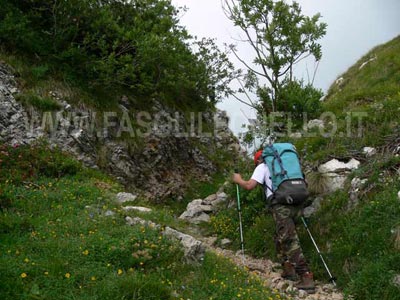 |
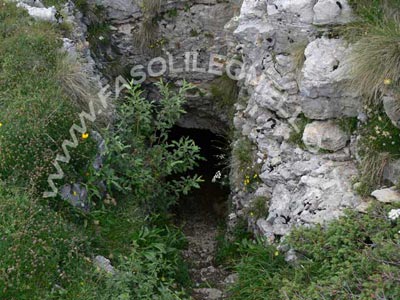 |
At Passo
Malera, you can see both northward and southward, many trenches;
sometimes they are interrupted by a mass of debris, sometimes you can
walk along them until reaching small windows above Alta Val d'Illasi.
Works of war periods, they're standing there on the old boundary beween
Italy and Austria, after having seen the first world war. Please
remember to watch these trenches with attention and caution. |
| Open window above 'Alta val d'Illasi | 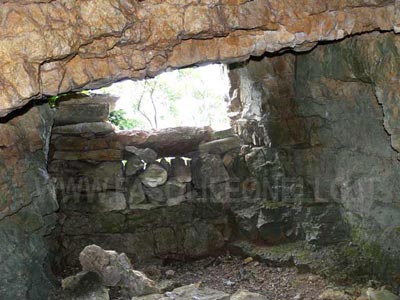 |
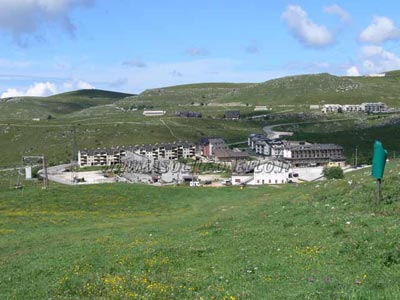 |
Here there's the mountain dew San Giorgio. You come come back to the starting point doing on the opposite direction the same route i explained above or completing the tour of the mountain Castel Malera along the path 287 that from Passo Malera brings you to Valon..but this is another small adventure that i'll tell you another time! |
| INDIETRO | |